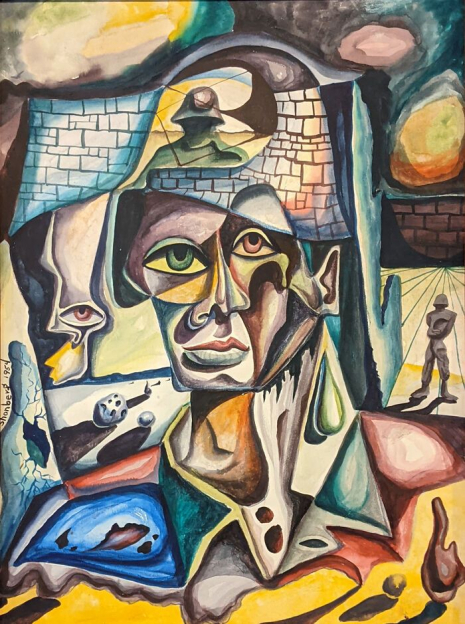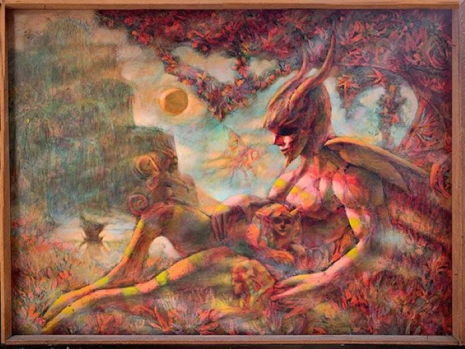
It’s Friday the 13th: Probably an auspicious time to announce a new major exhibition of the cult psychedelic artist Burt Shonberg at the Buckland Museum of Witchcraft and Magick in Cleveland, Ohio, which runs from August 17th until November 1st. This is the first exhibition of Shonberg’s work since his one and only exhibition in 1967. It includes rarely seen paintings and some of Shonberg’s work belonging to the late science fiction writer, George Clayton Johnson.
Shonberg was an artist who perception of the world was seriously altered after he took part in Dr. Oscar Janiger’s experiments into the impact of Lysergic Acid Diethylamide 25 (LSD) on the creative processes.
During his first session, Shonberg received an injection of 100ml of LSD. This led him to see a hidden structure to the universe where “Humanity is literally hypnotized by the Dream Reality of momentum caused by life (meaning external influences).”
There is an illusion of movement in life which is not the truth. This all relates to so-called time. Time is motion—is evolution. One might say that the Big Criminal in all this is identification. To be apart from the form is the answer to real vision—consciousness. To be awake is to be really alive—to really exist.
March 1961: Janiger carries out a second experiment with Shonberg upping the dose of LSD to 150ml. At first, the artist didn’t think the trip was working but suddenly he was propelled into an experience that led him to believe he had left the clinic and had witnessed an undiscovered world where giants danced in the sky. He quickly understood that this “psychedelic experience” could “possibly reach to actual magic and beyond.”
There are, of course, certain things that one experiences in the transcendental state that are not possible to communicate in the usual way, so new types of parables would have to be created to get the message through. These discoveries I refer to could be insights or revelations into various aspects of the world we live in, nature, the mind itself, the universe, reality, and God.
The experiments radically altered Shonberg and his approach to painting. He continued experimenting with LSD which eventually led him to believe he was a living embodiment of Baphomet—“a divine androgyne, a unification of light and darkness, male and female and the macro and microcosm,” or Aleister Crowley’s pagan, pre-Christian deity, or “the Devil in all his bestial majesty.”

Shonberg’s reputation has come under considerable reappraisal of late, especially after Spencer Kansa wrote the first biography on the artist Out There: The Transcendent Life and Art of Burt Shonberg three years ago. This summer a documentary called Out Here is described as an “in depth look at the famous Hollywood LSD painter” with contributions from the artists, actors, and friends who knew him.
More after the jump…






